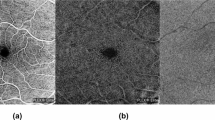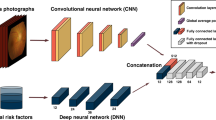Abstract
The number of patient suffering from complex congenital heart diseases (CHDs) increases gradually each year. The perioperative parameters assessment of complex CHDs patients is critical in choosing a suitable surgery method, but there is still a lack of an accurate and interpretable approach to preoperatively assess surgical risks and prognosis. The vascular patterns in retinal images of patients with complex CHDs reflect the severity of heart disease, so retinal images are used to predict the risk of perioperative parameters of heart disease. Perioperative parameters classification from retinal images is challenging due to the limited available retinal image data in patients with CHDs and the interference caused by retinal images with poor quality. In this work, a method called deep learning based perioperative parameter classifier is proposed to classify perioperative parameter risk from retinal images of patients with complex CHDs. To evaluate its effectiveness, our method is verified with 6 perioperative parameters, respectively. Experimental results show that the proposed method is superior to several popular classification networks in this task. Saliency maps are also provided to enhance the interpretability in our model and may be of great use for future medical researches.






Similar content being viewed by others
Explore related subjects
Discover the latest articles, news and stories from top researchers in related subjects.References
Molaei A, Asadi G, Khoshbakht M (2015) Prognosis of the newborns with congenital heart diseases. Proc Natl Acad Sci USA 107(50):21872–21877
Li YJ, Yang YQ (2017) An update on the molecular diagnosis of congenital heart disease: focus on loss-of-function mutations. Expert Rev Mol Diagn 17(4):1–9
Canobbio MM, Warnes CA, Aboulhosn J, Connolly HM, Khanna A, Koos BJ, Mital S, Rose C, Silversides C, Stout K (2017) Management of pregnancy in patients with complex congenital heart disease: a scientific statement for healthcare professionals from the American Heart Association. Circulation 135(8):50–87
Verheugt CL, Uiterwaal CS, Grobbee DE, Mulder BJ (2008) Long-term prognosis of congenital heart defects: a systematic review. Int J Cardiol 131:25–32
Poplin R, Varadarajan AV, Blumer K, Liu Y, McConnell MV, Corrado GS, Peng L, Webster DR (2018) Prediction of cardiovascular risk factors from retinal fundus photographs via deep learning. Nat Biomed Eng 2:158–164
Tsui I, Shamsa K, Perloff JK, Lee E, Wirthlin RS, Schwartz SD (2009) Retinal vascular patterns in adults with cyanotic congenital heart disease. Semin Ophthalmol 24:262–265
Shamsa K, Perloff JK, Lee E, Wirthlin RS, Tsui I, Schwartz SD (2010) Retinal vascular patterns after operative repair of aortic isthmic coarctation. Am J Cardiol 105:408–410
Chen F, Cheng D, Pan J, Huang C, Shen L (2018) The efficacy and safety of Retcam in detecting neonatal retinal hemorrhages. BMC Ophthalmol 18:202–204
Anderson D, Leal G, Krebs VL (2020) Prevalence and outcomes of congenital heart disease in very low birth weight preterm infants: an observational study from the Brazilian Neonatal Network database. Pediatr Crit Care Med 22(1):99–108
Gao X, Lin S, Wong TY (2015) Automatic feature learning to grade nuclear cataracts based on deep learning. IEEE Trans Biomed Eng 62:2693–2701
Cheng J (2018) Sparse range-constrained learning and its application for medical image grading. IEEE Trans Med Imaging 37:2729–2738
Gulshan V, Peng L, Coram M, Stumpe MC, Wu D, Narayanaswamy A, Venugopalan S, Widner K, Madams T, Cuadros J, Kim R, Raman R, Nelson PC, Mega JL, Webster DR (2016) Development and validation of a deep learning algorithm for detection of diabetic retinopathy in retinal fundus photographs. JAMA 316:2402–2410
Hu J, Chen Y, Jie Z, Rong J, Zhang Y (2018) Automated analysis for retinopathy of prematurity by deep neural networks. IEEE Trans Med Imaging 38:269–279
Zeng X, Chen H, Luo Y, Ye W (2019) Automated diabetic retinopathy detection based on binocular siamese-like convolutional neural network. IEEE Access 7:30744–30753
Li A, Cheng J, Wong DWK, Liu J (2016) Integrating holistic and local deep features for glaucoma classification. 2016 38th annual international conference of the IEEE engineering in medicine and biology society (EMBC), pp 1328–1331
Adal KM, Van Etten PG, Martinez JP, Rouwen KW, Vermeer KA, Van Vliet LJ (2017) An automated system for the detection and classification of retinal changes due to red lesions in longitudinal fundus images. IEEE Trans Biomed Eng 65(6):1382–1390
Lim G, Dejiang Xu, Daniel SW, Ting TW, MongLiLee WynneHs (2019) Feature isolation for hypothesis testing in retinal imaging: an ischemic stroke prediction case study. Proc AAAI Conf Artif Intell 33:9510–9515
Williams GD, Cohen RS (2010) Perioperative management of low birth weight infants for open-heart surgery. Pediatr Anesth 21:538–553
Ades AM, Dominguez TE, Nicolson SC, Gaynor JW, Tabbutt S (2010) Morbidity and mortality after surgery for congenital cardiac disease in the infant born with low weight. Cardiol Youn 20:8–17
Biccard BM, Rodseth RN (2012) Utility of clinical risk predictors for preoperative cardiovascular risk prediction. Surv Anesthesiol 56(1):36–38
Jeffrey XH, Jacobs P (2016) Mortality trends in pediatric and congenital heart surgery: an analysis of the society of thoracic surgeons congenital heart surgery database. Presented at the sixty-second annual meeting of the southern thoracic surgical association, vol 102, pp 1345–1352
Kertai MD (2015) A meta-analysis comparing the prognostic accuracy of six diagnostic tests for predicting perioperative cardiac risk in patients undergoing major vascular surgery. Br Med J 89:1327–1334
Pan W, Wang Y, Lin L, Zhou G, Hua X, Mo L (2016) Outcomes of dexmedetomidine treatment in pediatric patients undergoing congenital heart disease surgery: a meta-analysis. Pediatr Anesth 26:239–248
Zhang K, Liu X, Jiang J, Li W, Wang S, Liu L, Zhou X, Wang L (2019) Prediction of postoperative complications of pediatric cataract patients using data mining. J Transl Med 17:2–12
Zloto K, Bolkie Y (2019) Preoperative miRNA-208a as a predictor of postoperative complications in children with congenital heart disease undergoing heart surgery. J Cardiovasc Transl Res 13:245–252
Taylor S, Brown JM, Gupta K (2019) Monitoring disease progression with a quantitative severity scale for retinopathy of prematurity using deep learning. JAMA Ophthalmol 137:1022–1028
Seoud L, Hurtut T, Chelbi J, Cheriet F, Langlois JM (2016) Red lesion detection using dynamic shape features for diabetic retinopathy screening. IEEE Trans Med Imaging 35:1116–1126
Zhou M, Jin K, Wang S, Ye J, Qian D (2017) Color retinal image enhancement based on luminosity and contrast adjustment. IEEE Trans Biomed Eng 65(3):521–527
Ronneberger O, Fischer P, Brox T (2015) U-Net: convolutional networks for biomedical image segmentation. MICCAI 3:234–241. https://doi.org/10.1007/978-3-662-54345-0_3
Budai A, Bock R, Maier A, Hornegger J, Michelson G (2013) Robust vessel segmentation in fundus images. Int J Biomed Imaging 6:1548–1560
Yeung DS, Ng WWY, Defeng W, Tsang ECC, Xi-Zhao W (2007) Localized generalization error model and its application to architecture selection for radial basis function neural network. IEEE Trans Neural Networks 18:1294–1305
Ng WWY, Tuo Y, Zhang J, Kwong S (2020) Training error and sensitivity-based ensemble feature selection. Int J Mach Learn Cybern 11:2313–2326
Yeung DS, Li JC, Wing WYNG (2015) MLPNN training via a multiobjective optimization of training error and stochastic sensitivity. IEEE Trans Neural Networks 27:978–992
Liao W, Zou B, Zhao R, Chen Y, He Z, Zhou M (2020) Clinical interpretable deep learning model for glaucoma diagnosis. IEEE J Biomed Health Inform 24(5):1405–1412
Meng Q, Hashimoto Y, Satoh S (2020) How to extract more information with less burden: fundus image classification and retinal disease localization with ophthalmologist intervention. IEEE J Biomed Health Inform 24:3351–3361. https://doi.org/10.1109/JBHI.2020.3011805
Torre J, Valls A, Puig D (2020) A deep learning interpretable classifier for diabetic retinopathy disease grading. Neurocomputing 396:465–476
Sandler M, Howard A, Zhu M, Zhmoginov A, Chen LC (2018) MobileNetV2: inverted residuals and linear bottlenecks. In: Proceedings of the computer vision pattern recognition, Salt Lake City, UT, USA, pp 4510–4520
Kaiming H, Xiangyu Z, Shaoqing R, Jian S (2016) Deep residual learning for image recognition. In: Proceedings of the computer vision pattern recognition, Las Vegas, NV, USA, pp 770–778. https://doi.org/10.1109/CVPR.2016.90
Huang G, Liu Z, Maaten LVD, Weinberger KQ (2017) Densely connected convolutional networks. In: Proceedings of the computer vision pattern recognition, Honolulu, HI, USA, pp 2261–2269
Dhiravidachelvi E, Rajamani V, Manimegalai CT (2019) GLCM-based detection and classification of microaneurysm in diabetic retinopathy fundus images. Int J Adv Intell Paradig 14(1):55–69
Bannigidad P, Deshpande A (2019) Exudates detection from digital fundus images using GLCM features with decision tree classifier. In: Proceedings of the RTIP2R, Solapur, India, pp 245–257
Vincent D, Isabelle C, Ryo K (2013) Retinal vascular caliber is associated with cardiovascular biomarkers of oxidative stress and inflammation: the POLA Study. PLoS One 8(7):e71089
Zhu P, Feng H, Lin F (2014) The relationship of retinal vessel diameters and fractal dimensions with blood pressure and cardiovascular risk factors. PLoS One 9(9):e106551
Cheung CY, Xu D, Cheng CY (2020) A deep-learning system for the assessment of cardiovascular disease risk via the measurement of retinal-vessel calibre. Nat Biomed Eng 5(6): 1–11
Rim TH, Lee G, Kim Y (2020) Prediction of systemic biomarkers from retinal photographs: development and validation of deep-learning algorithms. Lancet Digit Health 2(10):526–536
Li LJ, Lee YS, Wong TY, Cheung YL (2013) Can the retinal microvasculature offer clues to cardiovascular risk factors in early life? Acta Paediatr 102(10):941–946
Li C, Zhong P, Yuan H, Dong X, Peng Q, Huang M, Qiaowei Wu, Liu B, Minghui Xu, Kuang Yu, Xiaomin Zeng Yu, Xiao YF, Honghua Yu, Yang X (2020) Retinal microvasculature impairment in patients with congenital heart disease investigated by optical coherence tomography angiography. Clin Exp Ophthalmol 48(9):1219–1228
Warnes CA (2005) The adult with congenital heart disease: born to be bad. J Am Coll Cardiol 46:1–8
Mitting R, Marino L, Macrae D, Shastri N, Pathan N (2015) Nutritional status and clinical outcome in postterm neonates undergoing surgery for congenital heart disease. Pediatr Crit Care Med 16(5):448–452
Acknowledgements
This work was supported in part by the National Natural Science Foundation of China under Grants 61876066 and 81870663, Guangdong Province Science and Technology Plan Project (Collaborative Innovation and Platform Environment Construction) 2019A050510006, Project of Investigation on Health Status of Employees in Financial Industry in Guangzhou Z012014075, and Medical Scientific Research Foundation of Guangdong Province of China C2019044.
Author information
Authors and Affiliations
Corresponding authors
Additional information
Publisher's Note
Springer Nature remains neutral with regard to jurisdictional claims in published maps and institutional affiliations.
Rights and permissions
About this article
Cite this article
Ng, W.W.Y., Liang, H., Peng, Q. et al. An automatic framework for perioperative risks classification from retinal images of complex congenital heart disease patients. Int. J. Mach. Learn. & Cyber. 13, 471–483 (2022). https://doi.org/10.1007/s13042-021-01419-0
Received:
Accepted:
Published:
Issue Date:
DOI: https://doi.org/10.1007/s13042-021-01419-0




